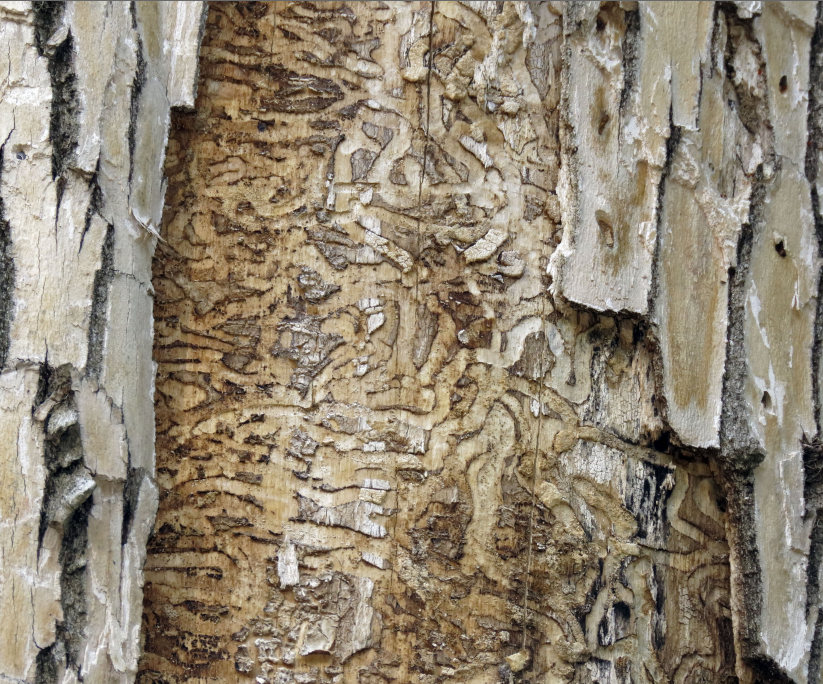The tallest trees on the entrance driveway reach leafless to the sky. A dozen of them, adorned only with yellow barricade tape, await removal very soon.

These trees have succumbed, simultaneously, to the Emerald Ash-tree Borer (EAB), as has almost every Ash tree you will encounter this year on our county roads.
This Asian beetle is expected to spread to and ultimately destroy 99% of the Ash trees native to the woods of northern New Jersey. In Southern Jersey it has already killed street and landscape trees since its first detection in Somerset County in 2014. Infected trees in our part of Burlington County first became visible in 2017.
On May 7 2018, we were very fortunate to have had a Pathways presentation by Pamela Zipse, a Certified Forest Expert and Outreach Coordinator for the Rutgers Urban Forestry Dept. This expert and richly documented lecture covered the biology and the insidious, often overlooked signs of damage from the EAB. Moreover she mapped the location of likely infected landscape Ashes at both Medford Leas and Lumberton. Perhaps best of all, she described the success of our own Ken Hutz in spotting early EAB damage and implementing a yearly administration of systemic insecticide with the hope of arresting progression of the disease. It may take several years of treatment to achieve the hoped for eradication of the pest.
In Asia this beetle is held in check both by defense mechanisms in susceptible species of tree, and by parasitoid wasps. Ms. Zipse described deliberate cultivation of Asian wasps which show promise in controlling EAB.
The Wikipedia entry for the White Ash compares the prospective damage to this species with two prior tree species that suffered near or total extinction in the 20th century: “The number of Chestnuts killed by the Chestnut blight was around 3.5 billion Chestnut trees while there are 3.5 billion Ash trees in Ohio alone. Dutch Elm disease* killed only 200 million Elm trees while EAB threatens 8.7 billion Ash trees in the United States.”
Plants have defense mechanisms against predators: from thorns to cardiac poisons and tannins. Tannins are phenolic compounds powerful enough to tan the hide of an animal to leather. The American Ash tree is noteworthy for its lack of toxic tannins. North American frogs (loc. cit.) rely on this deficiency: their tadpoles nibble on the Ash leaves they find in puddles. Regrettably, and for the same reason, the tree is defenseless against the Emerald Ash Borer.
* The chestnut blight in the early 1900’s is attributed to an East Asian fungal disease spread by airborne spores. The Elm tree, once a stately shade tree of the urban landscape, is subject to Dutch Elm disease, again a European fungal disease spread by both introduced and native beetles.
By Fred Kahan




